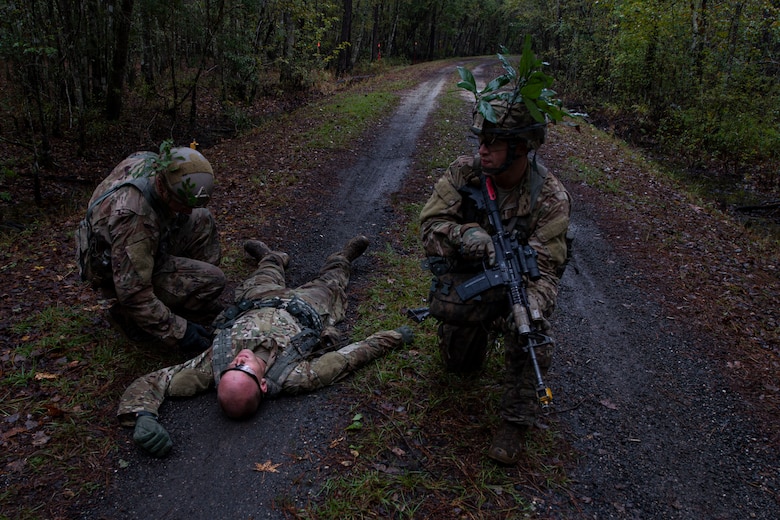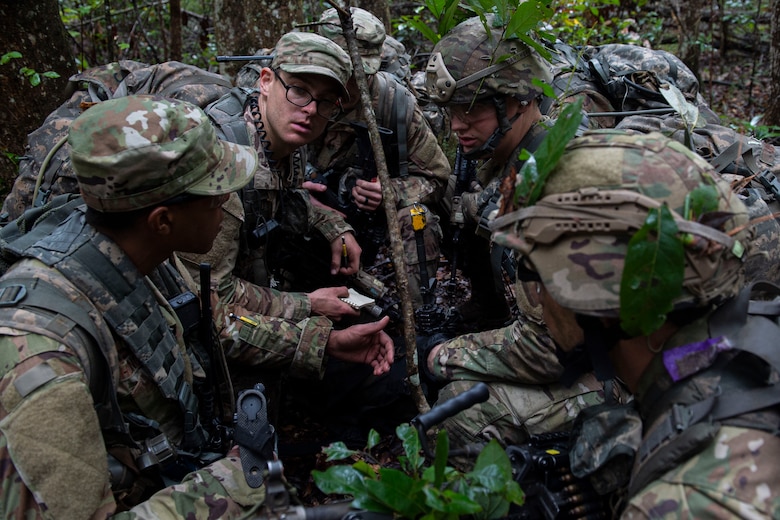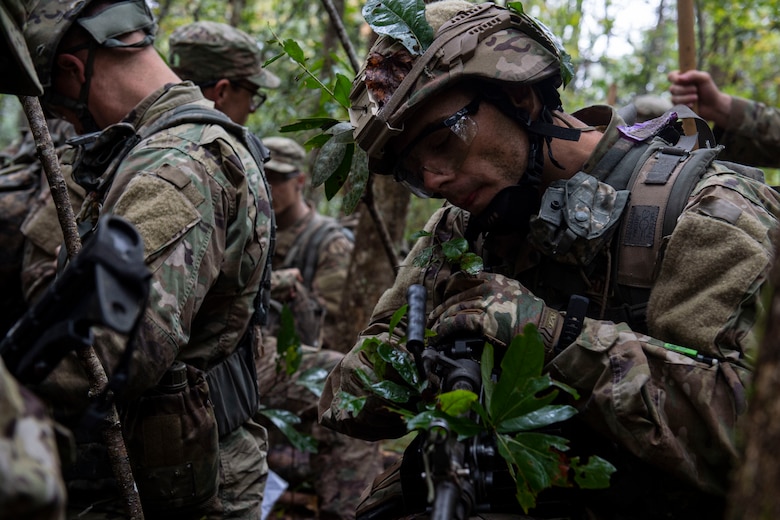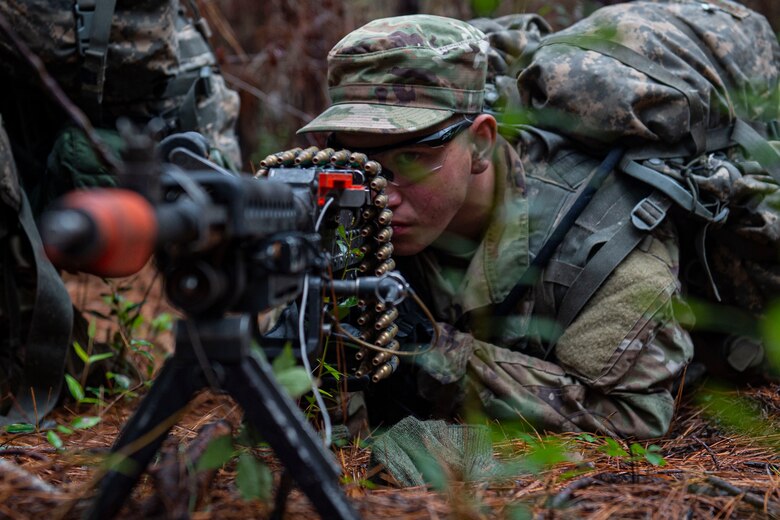The Air Force Ranger Assessment Course, hosted by the 820th Base Defense Group, tested the capabilities of 35 students at Moody Air Force Base and Camp Blanding Joint Training Center in Starke, Florida Oct. 31-Nov. 22.
The course is designed to evaluate each student to determine if they possess the knowledge, willpower and skills to qualify as a Ranger.
"The Ranger Assessment Course strives to meet the intent of senior military leaders by fielding a lethal, resilient and rapidly adapting joint force," said Tech. Sgt. Keegan Donnelly, Ranger Assessment Course program manager. "(It also builds) competent, agile and lethal Airmen capable of operating in austere, as well as in joint, denied or degraded and built-up environments. Rangers (learn) how to lead when things go wrong (by) guiding themselves and their men through fatigue, stress, hunger and controlled chaos."
The Ranger Assessment Course teaches students critical tasks needed to qualify for U.S. Army Ranger School. These tasks include land navigation, troop movements, shooting and maintaining weapons, using radios, employing an M18 Claymore mine, a ruck march and a combat water survival test.
"We conduct training that deals with weapons, small-unit tactics and stress management," Donnelly said. "We assess five components: the physical training test, combat water survival, land navigation, numerous ruck marches between five and 12 miles and ranger training tasks, which help develop students and prepare them to survive the first week of Ranger School and beyond."
Despite only 43% of this year's students qualifying to move on to Ranger School, nearly 315 Airmen have earned a Ranger tab since the Army began accepting all branches in 1955.
"Qualified Rangers gain the ability to develop and mold Airmen around them in all aspects of their career, and become proficient in troop leading in overwhelming circumstances," Donnelly said.
The course not only focuses on critical tasks, but it assesses its students on their ability to lead.
"I learned that leadership comes in different forms," said U.S. Marine Corps Sgt. Logan Hancock, a Ranger Assessment Course student. "I also learned how to give very specific instructions to accomplish a task in a short period of time and that as a follower, you need to take a step back and hold your comments off toward someone who is leading you so (you) can get (the job) done."
Army Ranger School is physically demanding and requires students to operate on minimal sleep and food. The Ranger Assessment Course gave students a taste of this training with long days and limited food and water.
"This course has shown me that not just the job, but the (people) that wanted to do this job, are awesome," Hancock said. "I wouldn't want to surround myself with anyone other than the caliber of (people) who want to accomplish Ranger School."
While 28 out of 35 participants completed the course, only 15 received the cadre's recommendation and a slot to attend Ranger School.
According to Donnelly, units that sent students to the Ranger Assessment Course invested in a more experienced leader that will be successful, both at home and abroad, in handling fatigue and stress while guiding those around them.

Students of the Air Force Ranger Assessment Course perform a simulated casualty search at Moody Air Force Base, Ga., Nov. 15, 2019. The course teaches students critical tasks such as land navigation and troop movements. During the 19-day training course, students are evaluated to determine if they possess the knowledge, willpower and skills to attend Army Ranger School. (U.S. Air Force photo by Airman Azaria E. Foster)

Squad leaders discuss strategy during an Air Force Ranger Assessment Course at Moody Air Force Base, Ga., Nov. 15, 2019. The course teaches students critical tasks such as land navigation and troop movements. During the 19-day training course, students are evaluated to determine if they possess the knowledge, willpower and skills to attend Army Ranger School. (U.S. Air Force photo by Airman Azaria E. Foster)

U.S. Air Force Staff Sgt. Riki Wamsley, an Air Force Ranger Assessment Course student, camouflages his weapon at Moody Air Force Base, Ga., Nov. 15, 2019. The course teaches students critical tasks such as land navigation and troop movements. During the 19-day training course, students are evaluated to determine if they possess the knowledge, willpower and skills to attend Army Ranger School. (U.S. Air Force photo by Airman Azaria E. Foster)

Senior Airman Zachary Dominguez, an Air Force Ranger Assessment Course student, looks down his sight at Moody Air Force Base, Ga., Nov. 15, 2019. The course teaches students critical tasks such as land navigation and troop movements. During the 19-day training course, students are evaluated to determine if they possess the knowledge, willpower and skills to attend Army Ranger School. (U.S. Air Force photo by Airman Azaria E. Foster)

Airman 1st Class Dennis Hannas, an Air Force Ranger Assessment Course student, uses a protractor to pinpoint his location at Moody Air Force Base, Ga., Nov. 15, 2019. The course teaches students critical tasks such as land navigation and troop movements. During the 19-day training course, students are evaluated to determine if they possess the knowledge, willpower and skills to attend Army Ranger School. (U.S. Air Force photo by Airman Azaria E. Foster)






